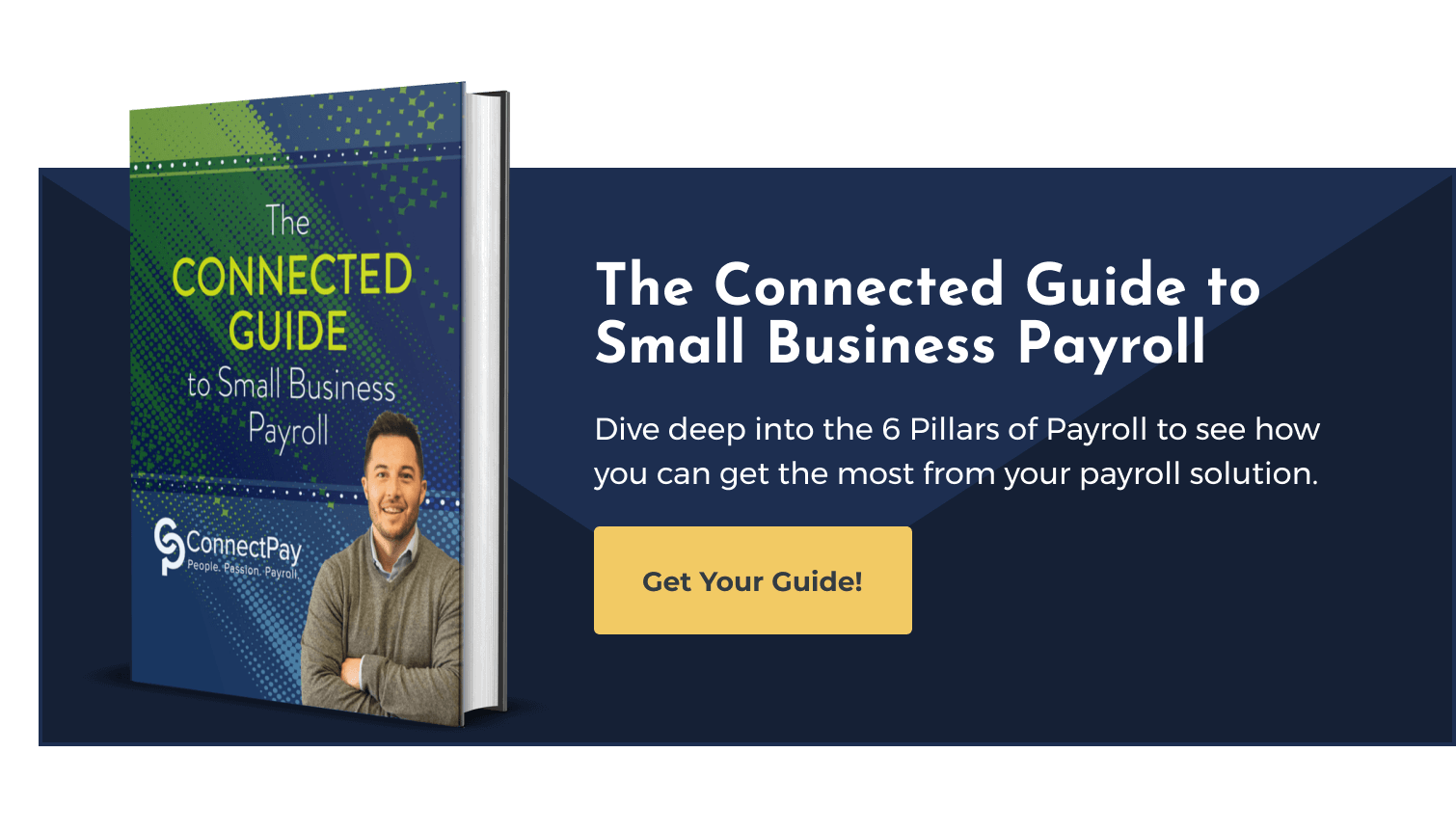How to Manage Payroll for Your Small Business: 5 Best Practices for 2022

Running payroll and managing payroll are separate tasks entirely.
While many payroll providers can give you a list of steps to ensure your employees are paid, they're often missing some details to ensure you're paying them right.
Benefit programs, payroll taxes, PTO...there are a lot of other variables tied into running payroll, and if you get it wrong, it could become much more costly.
Managing payroll can feel like a minefield for a small business owner. Every process seems riddled with federal requirements and regulations, complicated forms, deadlines, and more. What’s worse? The consequences of mismanaging your payroll can include costly fines and worse. In short: managing payroll for a small business can feel like a chore. But it doesn’t have to.
This post will cover how to learn payroll management for small businesses and include our top 5 tips for managing small business payroll in 2022.
Tips from the Pros: How to Manage Payroll for a Small Business
When you start a small business, your focus may be on setting up your business plan, tracking your expenses, and acquiring new customers or clients. As soon as you begin to bring on employees, managing payroll is necessary, but it may not be your forte as a small business owner.
Methods of managing payroll for small businesses vary depending on the size of your business. If you have only a few employees, you may be managing your payroll directly. As your business grows, you may have an employee who handles the accounting and bookkeeping who steps in to take over payroll processes. Regardless of whether you are managing the payroll yourself or delegating those responsibilities, you should ensure that you have a backup who understands payroll processing if your primary payroll processor is sick or on vacation.
Related Read: 4 Steps to Improving Payroll Services and Operations This Year
Managers and supervisors will also need to be involved in your payroll processes, if only for approving hours worked, vacation time, and other paid time off.
As a small business owner, one main concern of payroll processing is to ensure that the account that funds your payroll has adequate funds to cover the amount that needs to be paid. Many small business owners use software like QuickBooks to stay organized and consistent with their payroll fund tracing.
Managing payroll can put a significant amount of stress on your time and attention as a small business owner. This time drain is why you may want to consider partnering with a payroll provider who can help you manage your payroll effectively and efficiently—without breaking the bank.
To learn more about the ins and outs of managing payroll for your small business, you can also reference our free resource, the Connected Guide to Small Business Payroll.
1. Proper Employee Classification
Proper classification of employees is essential to running payroll processes that are compliant and efficient. Considering employee classifications, you will need to understand the difference between a 1099 worker and a W2 worker.
1099 Workers, or “independent contractors,” are technically self-employed. They receive a contract that outlines their duties and job requirements. One plus of hiring an independent contractor is that you don’t have to pay payroll taxes on these workers. Independent contractors are also not eligible for benefits like health insurance or vacation time.
W2 Workers, often thought of as standard employees, have a more “regular” relationship with your small business. This type of employee works according to your business’s schedule. Your business supplies them with the tools and resources they need to complete their daily work. Typically, these workers are eligible for company-sponsored health plans, retirement contributions, and other benefits.
The differences in these types of workers seem clear when laid out in this way. Still, when classifying employees in your business, things can feel a bit more complicated—especially given the recent increase in remote work. 10-20% of employers are guilty of employee misclassification. To classify between 1099 vs W2 workers, consider the following:
- Day-to-day behaviors: How much day-to-day instruction does your employee receive? Do they go through a rigorous training process to work with your company?
- Financial considerations: Have you provided your employee with the equipment they will be using to do their work, or did the employee make an investment upfront? Are they reimbursed for business expenses?
- Business relationships: Is there a time limit on the business relationship with your employee, or is the relationship indefinite?
Answering these questions will help you narrow down how to classify your employees properly. If you misclassify your employees, you may face fines and penalties including a $50 fine per W-2 employee misclassified as a 1099 worker. You may also be fined a penalty of 1.5% of each employee’s wages and more.
2. Create (and Distribute) an HR Handbook
Our second best practice for 2022 is to ensure that your small business has an HR handbook. What does an employee handbook include? Your HR handbook should include standards, guidelines, and ethics you want your employees to understand and follow.
Additionally, you can use your HR handbook to outline your payroll processes and procedures. For example, your handbook may have a section on vacation accrual, payroll timelines, and benefits.
Creating and distributing an HR handbook with this information is important because it solidifies your processes and expectations. Providing this resource to every employee makes it easier for everyone in your organization to understand and follow the guidelines outlined in the guide. Having them in writing makes them easier to enforce.
Additionally, an HR handbook can save your payroll team time because the handbook will answer many employee FAQs, taking the burden of answering those common questions off of your team.
3. Set Up Automatic Reminders
Payroll management is a process that comes with a lot of different deadlines. No matter how organized you are, it can be challenging to handle all those deadlines while managing the day-to-day aspects of your business. This is why setting up automatic reminders is another best practice we encourage in 2022.
Automatic reminders are simply calendar alerts. You can set these up to keep you apprised of tax deadlines and other important payroll-related dates and requirements. Relying on calendar alerts is far more efficient than trusting the inefficient human memory with something as essential as a tax requirement. Additionally, in an increasingly remote or hybrid work environment, relying on notes scrawled on physical calendars is asking for trouble.
Coordinate with all the decision makes and important players involved in your payroll process and set up automatic reminders that will ping the proper team member when needed. These alerts can be set up on a regular basis, such as each December for the entire following calendar year.
4. Go Paperless
We’ve talked quite a bit about the changing work environment in this post—and we will discuss it again in this bullet point. Our fourth best practice for payroll management in 2022 is to embrace paperless payroll processes.
Paperless payroll processes include offering direct deposit, mobile apps, online access to paystubs, etc. Paperless payroll is beneficial to both your business and your employees. This process is quicker, more efficient, and easier to conduct in a remote or hybrid work environment than physical checks and pay stubs.
Electronic deposits also make reporting simpler and remove the need for physical files. This type of payroll processing also minimizes manual work and is environmentally friendly.
5. Get Connected
Our last best practice for payroll management in 2022 is to get connected! Get connected internally by eliminating silos within your organization. Set up open lines of communication to enable your payroll team or point-person to get the data they need to do their job effectively.
You should also take steps to get connected externally. Connect with payroll providers, tax experts, and workers’ compensation specialists in your area. It’s unreasonable to expect a single person in your organization to manage the complex ins and outs of your business’s payroll processes. Connected internally and externally with experts ensures that your payroll runs as smoothly as possible.
How to Manage Payroll for a Small Business: The Easy Way
If you want to manage your payroll effectively in 2022, the best practices discussed in this post are an excellent place to start. Enacting modern, organized practices for payroll will help your business run more smoothly and take away some of the headaches of payroll management. However, we know that this is all much easier said than done.
Enacting the best practices listed here can feel overwhelming—especially if your business doesn’t have a large team on hand to help manage payroll processes.
Partnering with a payroll provider like ConnectPay can help you implement all the best practices discussed here and more—and still make it home on time. Get in touch with a Connected Service Rep today to learn more about how ConnectPay can help you manage your payroll. You can also reference our Connected Guide to Small Business Payroll to better arm yourself with the knowledge you need to run your payroll without breaking a sweat.







